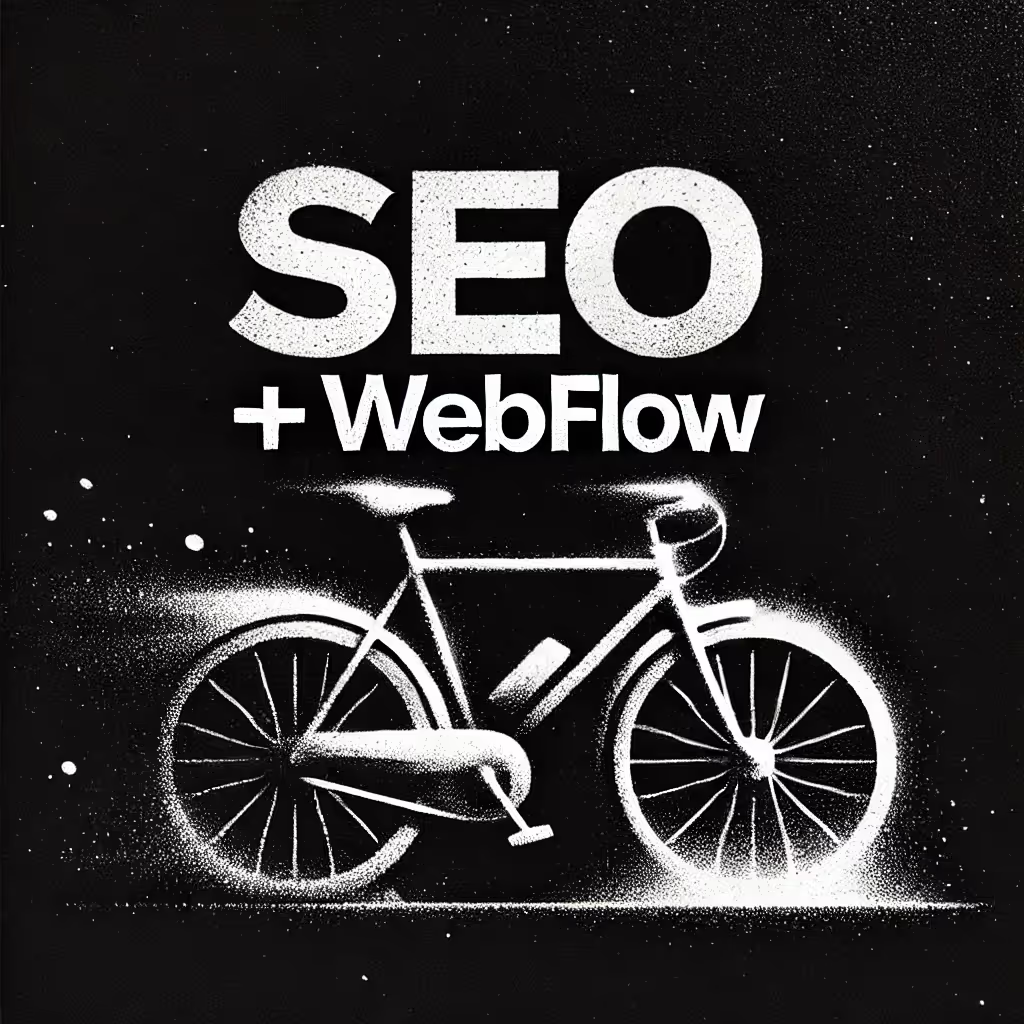
Mastering search engine optimization (SEO) is paramount for any business looking to enhance its online presence. With Webflow, you have a powerful platform that not only allows you to create stunning websites but also optimizes them for search engines effortlessly. This post will guide you through the essentials of SEO in Webflow, ensuring that your site stands out in the crowded digital landscape.
SEO is not just a buzzword; it's a critical component of any successful digital strategy. It involves optimizing your website to rank higher in search engine results, thereby increasing visibility and attracting more visitors. For Webflow users, understanding SEO's importance is the first step towards leveraging its full potential.
Search engines like Google use complex algorithms to determine which sites appear at the top of search results. By optimizing your site, you improve its chances of being noticed by these algorithms, leading to increased traffic and potential conversions.
One of the foundational aspects of SEO is ensuring that all meta information is accurately added. Meta titles and descriptions are snippets of text that describe a page's content in search results. They play a crucial role in attracting clicks and improving your site's visibility.
In Webflow, you can easily add and edit meta titles and descriptions from the page settings. Remember to include relevant keywords naturally to enhance SEO without compromising readability. A well-crafted meta description should be concise, informative, and enticing to potential visitors.
Images are an essential part of any website, but they can also slow down your site if not optimized properly. Webflow allows you to optimize images by adjusting their size and format, ensuring that they load quickly without sacrificing quality. Simply opening the asset browser, selecting your images and choosing "compress", you can optimize any and all images.
Using alt tags for images is another crucial SEO practice. Alt tags provide a text alternative for images, helping search engines understand their content. This is particularly important for accessibility and can improve your site's overall SEO ranking.
Designing and building a site with SEO in mind involves several best practices that can significantly impact your site's performance. Start by ensuring your website has a clear, logical structure. This not only improves user experience but also makes it easier for search engines to crawl your site.
Use headings (H1, H2, H3) effectively to organize your content. Headings help search engines understand the hierarchy and importance of different sections on your page. They also make your content more accessible to readers, improving engagement and retention.
Webflow offers a suite of powerful SEO tools that can help you fine-tune your site's optimization efforts. From automated SEO features to robust 301 redirects management, Webflow equips you with everything you need to boost your site's search engine ranking.
Take advantage of Webflow's CMS Collections to automate meta titles and descriptions. This feature saves time and ensures consistency across your site. Additionally, Webflow provides easy sitemap controls, allowing you to update and optimize your page titles and descriptions seamlessly.
Case Study: Kisi's SEO Success with Webflow
A great example of SEO success using Webflow is Kisi, a company that managed to grow its SEO traffic by 300%. By leveraging Webflow's flexible content management tools and SEO features, Kisi was able to optimize its site effectively and achieve remarkable results.
Kisi's success story highlights the importance of a well-structured site and the strategic use of keywords. By aligning their content with user intent and optimizing their site's technical aspects, Kisi significantly improved its search engine visibility. Read more in the link below.
Credit: 4 ways Kisi used Webflow to grow SEO traffic by 300%
Website speed is a critical factor in SEO, as search engines prioritize fast-loading sites. Webflow's high-performance hosting, powered by AWS, ensures that your site runs smoothly and efficiently. With 100+ data centers worldwide, your site will load quickly for every visitor, enhancing both user experience and SEO.
Security is another key consideration. Webflow offers built-in SSL for all sites, eliminating the need to manage or update plugins. This not only ensures your site's security but also boosts your SEO ranking, as secure sites are favored by search engines.
A user-friendly site is essential for both SEO and user engagement. Ensure that your site is easy to navigate, with clear calls to action and minimal pop-ups. Use white space effectively to improve legibility and focus, and make sure your site is mobile-friendly.
Mobile-friendliness is crucial, as Google uses mobile-first indexing. Webflow's responsive design capabilities allow you to create a seamless experience across all devices, further enhancing your site's SEO performance.
Content is king when it comes to SEO. Create high-quality, valuable content that addresses your audience's needs and interests. Use a mix of text, images, videos, and infographics to convey information effectively.
Ensure your content is well-structured, with clear headings and subheadings. This not only makes your content more accessible to readers but also helps search engines understand its context and relevance.
Site speed is a critical aspect of SEO, as slow-loading sites can lead to high bounce rates and lower search engine rankings. Use Webflow's performance tools to analyze your site's speed and address any issues that may be slowing it down.
Compress images, minimize CSS and JavaScript files, and use a content delivery network (CDN) to enhance site speed. These steps can significantly improve your site's performance and boost its SEO ranking.
Learn more about different image formats (WebP and AVIF) and compression types.
Internal links are important for both SEO and user experience. They help users and search engines navigate your site and understand the relationship between pages. Use descriptive anchor text and ensure that your internal links improve the user's experience by providing additional relevant information.
A well-maintained internal linking structure can boost your site's SEO ranking and keep visitors engaged, increasing the likelihood of conversions.
Backlinks are a crucial component of SEO, as they signal to search engines that your content is valuable and trustworthy. Focus on building high-quality backlinks from reputable websites to improve your site's ranking.
Consider guest blogging, collaborating with influencers, and creating shareable content to earn authoritative backlinks. These strategies can enhance your site's SEO and drive more organic traffic.
SEO is an essential aspect of any successful website, and Webflow provides all the tools you need to optimize your site effectively. By understanding the importance of SEO, adding meta information, optimizing images, and following best practices for site design and build, you can enhance your site's visibility and attract more visitors.
Leverage Webflow's powerful SEO tools and learn from success stories like Kisi to achieve your SEO goals. Remember, SEO is an ongoing process, and staying up-to-date with the latest trends and practices is key to maintaining your site's competitive edge.
For those ready to take the next step, request a Free SEO audit of your site and let us see if we can help.

